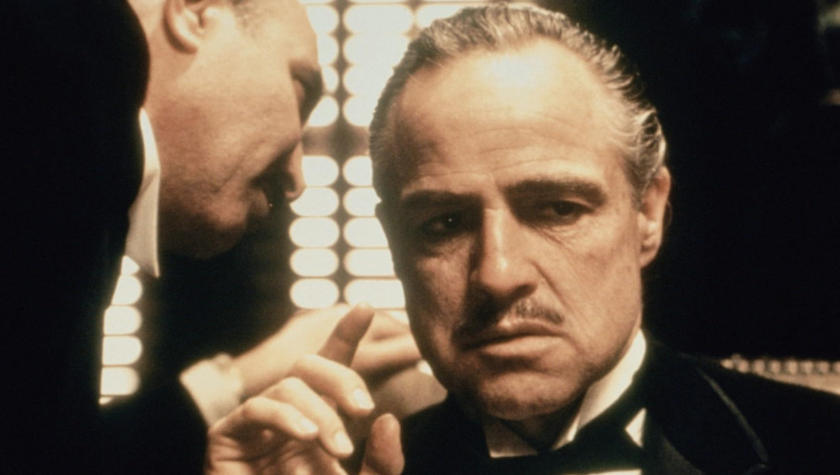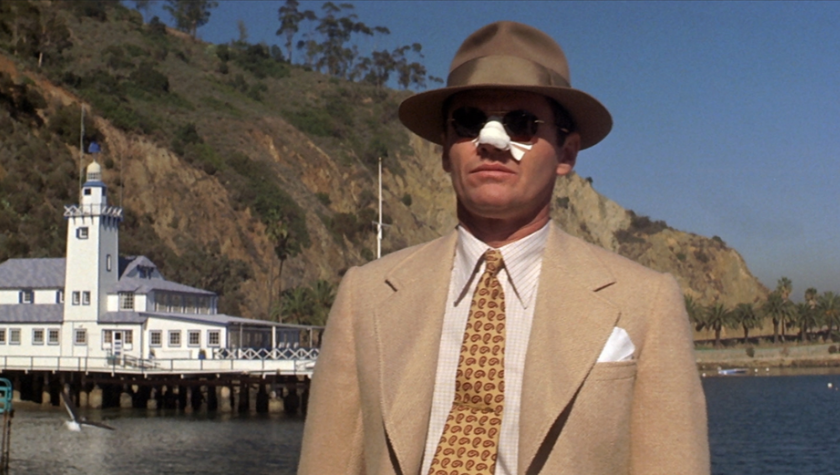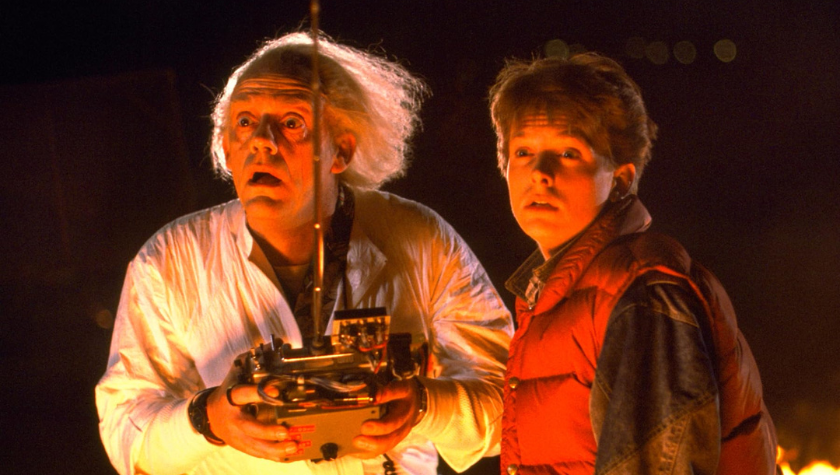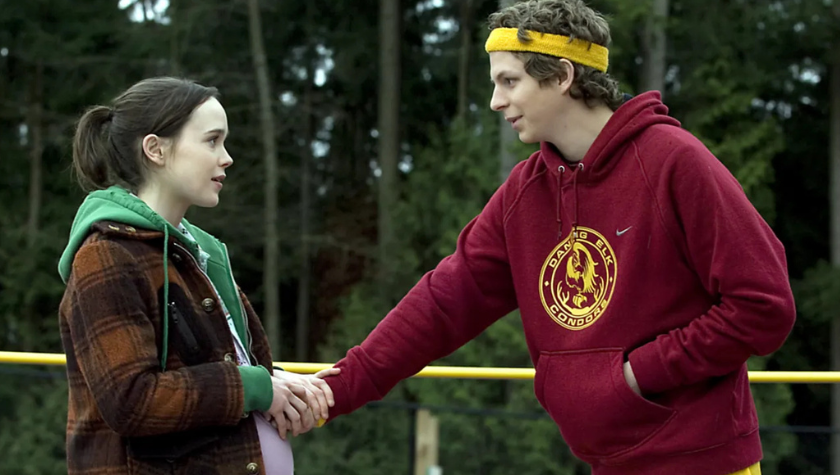

What does it mean to be one of the best screenplays of all time? More importantly, how do you know when you’re reading one? Ask any script reader in Hollywood tasked with reading hundreds of scripts per year and they’ll tell you that most aren’t good for any number of reasons, which makes the incredible ones stand out as something special.
Reading the screenplays of the best scripted films gives the writer the chance to explore various styles and compare how their writing differs from other great scripts. Whether they stuck to screenwriting rules or not, there was always the foundation of screenwriting present. This list of the best film scripts of all time spans decades from the 1950s through 2010s and is immediately up for debate. Regardless, these ten famous scripts are must-reads for screenwriters who want to see how excellent writing was turned into amazing movies.


1. Chinatown
Written by Robert Towne
One of the most famous screenplays ever written started with a property sale near Towne’s home in the 1970s.
“Chinatown for me began when I was living in Benedict Canyon and some developer bought up acreage in nearby Deep Canyon and started a rapacious building concern. Land was being destroyed because of greed,” Towne said in a 2024 interview with Variety.
Chinatown is a classic noir thriller complete with a private investigator, the mysterious woman who hires him, and deception that goes deeper than expected. What makes it a classic is that it’s filled with compelling characters, timeless themes and plot twists that open the door for constant discussions. Towne knew Jack Nicholson was interested in the leading role and could write with him in mind, making it perfect to play with his strengths.
“Having a real person to write for simply makes my task easier and more enjoyable,” Towne said. Perhaps when writing we should envision our dream performers in those roles too.
2. The Godfather
Written by Mario Puzo and Francis Ford Coppola
Mario Puzo was a struggling writer until he wrote The Godfather, which Paramount Pictures optioned before it became a massive bestseller. And Puzo did it all for the money.
“I have written three novels. The Godfather is not as good as the preceding two; I wrote it to make money,” Puzo had said.
Coppola had once admitted that he took on the job to direct the film for the money, and because he wanted to use it as a springboard to make other movies.
Despite their nonchalant approach, Puzo and Coppola created a masterpiece. The screenplay not only is filled with repeatable lines still used today (how many people still say “I’m going to make him an offer he can’t refuse”?) but it’s a great lesson in adapting a novel into a feature film and knowing what should stay, what gets cut and what needs to be added. Read the book first, then the screenplay.


3. Back to the Future
Written by Bob Gale and Robert Zemeckis
Back to the Future is a masterclass in set up and payoff. Gale and Zemeckis cram so much in the first 15 minutes, it’s hard to keep track.
As popular as it is today, the story wasn’t an easy sell. If it wasn’t for the time-travelling refrigerator, which was changed to a car out of fear kids would lock themselves inside their fridge, it was the incest plot about the mom who wants to get romantically involved with her son. Audiences let that notion slip because it falls in line with “movie logic.”
“There’s real logic and there’s movie logic,” Gale said in a 2015 interview with The Hundreds. “If you create movie logic and you stick with it, people will buy it even if it doesn’t make that much sense. The best example of that is the disappearing photo gag. It’s a great device because it visually tells you how much time Marty has left before he starts to fade out from existence. But if you start thinking about it, it begs the question, how come the physical photograph itself isn’t disintegrating?”
Back to the Future was a combination of Gale’s love of science fiction, especially H.G. Wells (who wrote The Time Machine) and a trip back home where he looked through his parents’ yearbook out of curiosity. Learning things about his dad, he mused whether he would be friends with his dad if they went to high school together.
4. Network
Written by Paddy Chayefsky
Long before news became entertainment, Network showed how a TV network could exploit an anchor who rants and raves on screen for the benefit of ratings, even if it becomes detrimental to himself and society. In the most famous scene of the movie, the anchor famously shouts, “I’m mad as hell, and I’m not going to take this anymore.” This leads to people all across the city opening their windows and yelling the same line into the night air.
Chayefsky had looked around at the world of Vietnam, Watergate and polarization and saw how much it seeped into the TV programs he watched, whether it was the news or a sitcom. He was mad as hell and wanted to write a satire about it.
What makes Network one of the best scripted movies is how at first it feels ridiculous and satirical but moves into something more dramatic and serious. It shows how to create a commentary of the times that has also remained relevant, even after 50 years.
5. Some Like It Hot
Written by Billy Wilder and I.A.L. Diamond
Some Like It Hot is considered one of the best comedies ever made. What makes it one of the best screenplays of all time and why screenwriters should study it is in the dialogue, which is sharp and witty, drives the story and is filled with subtext. The characters are well-defined and easy-to-like, even if they do lie, cheat and steal.
The movie has two cross-dressing men whose whacky antics throughout involve one trying to hook up with Sugar (Marilyn Monroe) and another attempting to avoid an old rich man who can’t tell she’s a man.
Perhaps the message and how the story is told makes it a classic. As described in a BBC commentary, “The message is that there is nothing wrong with faking it until you make it. Experimenting with a new identity can help you become a better, happier person. It can help you survive. And, if you’re lucky, you’ll find someone who accepts you for whomever you want to be - perfect or otherwise.”


6. Get Out
Written by Jordan Peele
As a modern-day classic, Get Out became a stellar example of writing for its themes, surprises and high-level horror. Coming from the world of comedy, Peele changed the course of his career by writing suburban horror.
“I felt it was important first and foremost to get the entire audience on board with the inherent fears that a black man has,” Peele said in a Guardian interview in 2017. Having it take place in the suburbs was another aspect of showing the audience what scares him. “I’m also a huge fan of Halloween, so there was some precedent for how scary suburbs can be in film.”
Get Out can show screenwriters how to put an audience into the shoes of a protagonist and make them feel through experience.
7. The Social Network
Written by Aaron Sorkin
Why would anyone care about how Facebook was created? And yet, The Social Network proved the doubters wrong by telling a story about young, smart, ambitious college kids who are great at getting at each other’s throats. Any Sorkin script will be a masterclass in dialogue, so anyone who wants to read this Academy Award winning screenplay will gain a better understanding of how to make characters come alive through the words they speak.
What makes this one of the best screenplays of the 2000s is how timely it felt, and that it’s a preview of where social media started and how it got to where it is today.
“When I write nonfiction, to me, it's not a photograph, it's a painting,” said Sorkin in an interview with the Library of Congress. “There is a difference in journalism and what I do. I know that sounds like sort of a convenient way to get out of telling the truth, but I wouldn't pervert the truth, and I certainly wouldn't defame anyone. What a newspaper does is accuracy and what I try to do with nonfiction is truth.”
8. The Sixth Sense
Written by M. Night Shyamalan
M. Night Shyamalan was the next Steven Spielberg or maybe Alfred Hitchcock. His 1999 Oscar-nominated feature film hit like a meteor because of its surprise ending. It was as if the 1990s discovered yet another ambitious, talented filmmaker making their mark in Hollywood. While there is a lot of set up leading to that surprise, it’s overall a ghost story about redemption and everyday fear, and not the kind often found in horror movies.
Shyamalan did struggle with finding that little extra bit to make the movie become a masterpiece. That piece was exploring life and death in the context of a therapist treating a child who sees dead people.


9. Juno
Written by Diablo Cody
Juno is a small movie with massive ideas. It’s about a high schooler facing a lifechanging question on what to do with an unplanned pregnancy. Cody’s unique style and independent twist on the teen comedy not only brought a sensitive topic to the big screen but made it endearing to a vast audience.
It started with the creation of a strong, female character who took control of the situation.
“Juno's no role model but she's bright, has a wry sense of humor and is confident about who she is. Plus. she never allows herself to be a victim. She takes full responsibility for her actions,” Cody said in an interview with KPBS when the film was released.
Cody wrote a script with characters showing their flaws and reacting in a myriad of ways that felt human. It would be hard to emulate Cody’s style of dialogue but her Academy Award winning screenplay is a lesson in writing real characters in a movie world.
10. Fargo
Written by Joel and Ethan Coen
Fargo was at first known as that movie about a guy killed in a wood shredder and the people with funny accents. While the film was everything Coen Brothers, it started off as a screenplay about a kidnapping gone wrong and the lies people get trapped in. It’s both a comedy and a thriller where seemingly unintelligent people try to act smart; the only exception being the detective tasked with getting to the bottom of it all.
Fargo came at the height of independent cinema in the 1990s when obscure Sundance movies were winning Oscars and finding their way to box office fortune. What makes this one of the best film scripts of the 1990s is its unique characters and the strange situation that intrigues audiences.
Honorable mention:
There are hundreds of film scripts that could be included amongst the list of greatest screenplays of all time, and this was just a snapshot at some that today’s screenwriters can analyze. Here are a few honorable mentions:
- Casablanca: It’s a miracle this movie got made as it was being written while they were shooting it. Nonetheless, the storytelling is phenomenal as is how the writers made it one of the best screenplays ever written. Check out the behind-the-scenes story here.
- Mean Girls: Starting out as a parent’s guide to how teenage girls act, this incredible screenplay by Tina Fey based on a nonfiction quasi-self-help book shows how to spot a story where one may not seem to exist.
- Pulp Fiction: Take every rule about screenwriting and throw it out the window. Quentin Tarantino was a known writer/director but it was this screenplay that brought on-board massive talent to an ambitious project that seemed to throw all the rules of storytelling away.
If you want to know how to be a screenwriter, see how these best screenplays made it from page to screen. Final Draft offers film and script analysis, tips and advice on how to create your story and content from today’s best TV and film writers so make sure you’re checking out these resources.

